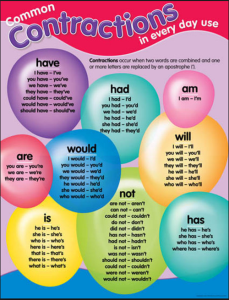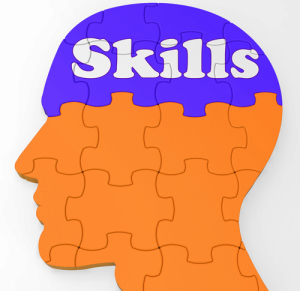Depending on whether you share classrooms with other teachers or have your own for the school year, here are 17 strategies you can apply to make your classroom more dyslexia friendly for your students.
 1. Have the student sit close to you can see when they need help and offer support when it is required.
1. Have the student sit close to you can see when they need help and offer support when it is required.
2. It is also preferable to have students with dyslexia sitting closer to the front of the classroom rather than to the back because copying from the board can take a great deal of mental energy and sitting closer is generally better to assist with this visual processing skill.
3. Give instructions clearly and concisely without too much waffle to reduce auditory information overload.
4. When speaking and writing use shorter sentences rather than longer ones. This will make information easier to retain.
5. Watch students carefully to see if any extra assistance is required, once students are working. Watch for body language like seat wriggling, the child who is distracted or hands that are raised to request extra assistance. Be prepared to provide alternative ways to describe, explain, draw or show a concept – particularly in Math.
6. Offer a visual cue or display to represents any new concepts or ideas you are presenting. Concrete materials are a good option too.
 7. Leave the visual displays in place to aid the memorisation of previously taught work.
7. Leave the visual displays in place to aid the memorisation of previously taught work.
8. Leave notes, workings out and spelling words on display for as long as possible so that students can copy and refer to them for as long as is needed.
9. Provide a copy of printed notes of information presented to students, which can be taken away and used for further revision at a later date. Notes can also be loaded onto a flash drive that students can take home with them or students can take a photo with their phone or computing device to refer to at a later time.
10. Do not call upon a student with dyslexia to read aloud, publicly answer a question or present information to the whole class, unless they have had an opportunity to practice or they indicate that they can do what is required of them.
11. Use mixed media to present new information to allow for visual, audio, tactile and kinaesthetic learners. Use multisensory teaching  strategies to encourage students to retain this information.
strategies to encourage students to retain this information.
12. Record audios of your class instructions and place them on the school website. This will allow student to revisit these at home. You can do the same with notes or instructions for assignments or homework. Students can record their own audios with their phones or computing devices.
13. Use drama, games and fun activities for revision of information. Get students laughing. Dopamine a chemical released in our brains when we are enjoying learning can be a powerful way to cement information into a student’s long-term memory.
14. Make sure students have access to fresh air, appropriate lighting and cool drinking water to allow them to work at their optimal level.
15. Be aware that certain lighting, particularly bright fluorescent lights can impact negatively on students with visual processing difficulties. They may work better in an alternative area of the classroom. You may also like to provide a range of coloured overlays and reading rulers that student can borrow to reduce eyestrain and assist reading.
 16. Allow children to take responsibility for their schoolwork by giving them the ability to self-monitor and assess. Teachers often forget this important step and do this for their students, stating what they expect of the students. Instead, encourage the students to start each lesson with a statement such as. “By the end of this lesson I will have done A,B or C. Revisit this strategy at the end of the lesson to encourage personal monitoring of achievements.
16. Allow children to take responsibility for their schoolwork by giving them the ability to self-monitor and assess. Teachers often forget this important step and do this for their students, stating what they expect of the students. Instead, encourage the students to start each lesson with a statement such as. “By the end of this lesson I will have done A,B or C. Revisit this strategy at the end of the lesson to encourage personal monitoring of achievements.
17. Students with dyslexia can have difficulty with directional and spatial tasks and may become disorientated. It can be helpful to have a colour coded school timetable on hand so students know where they need to be and when. You may also like to include a detailed colour map of the school so they know where each classroom is situated.



















